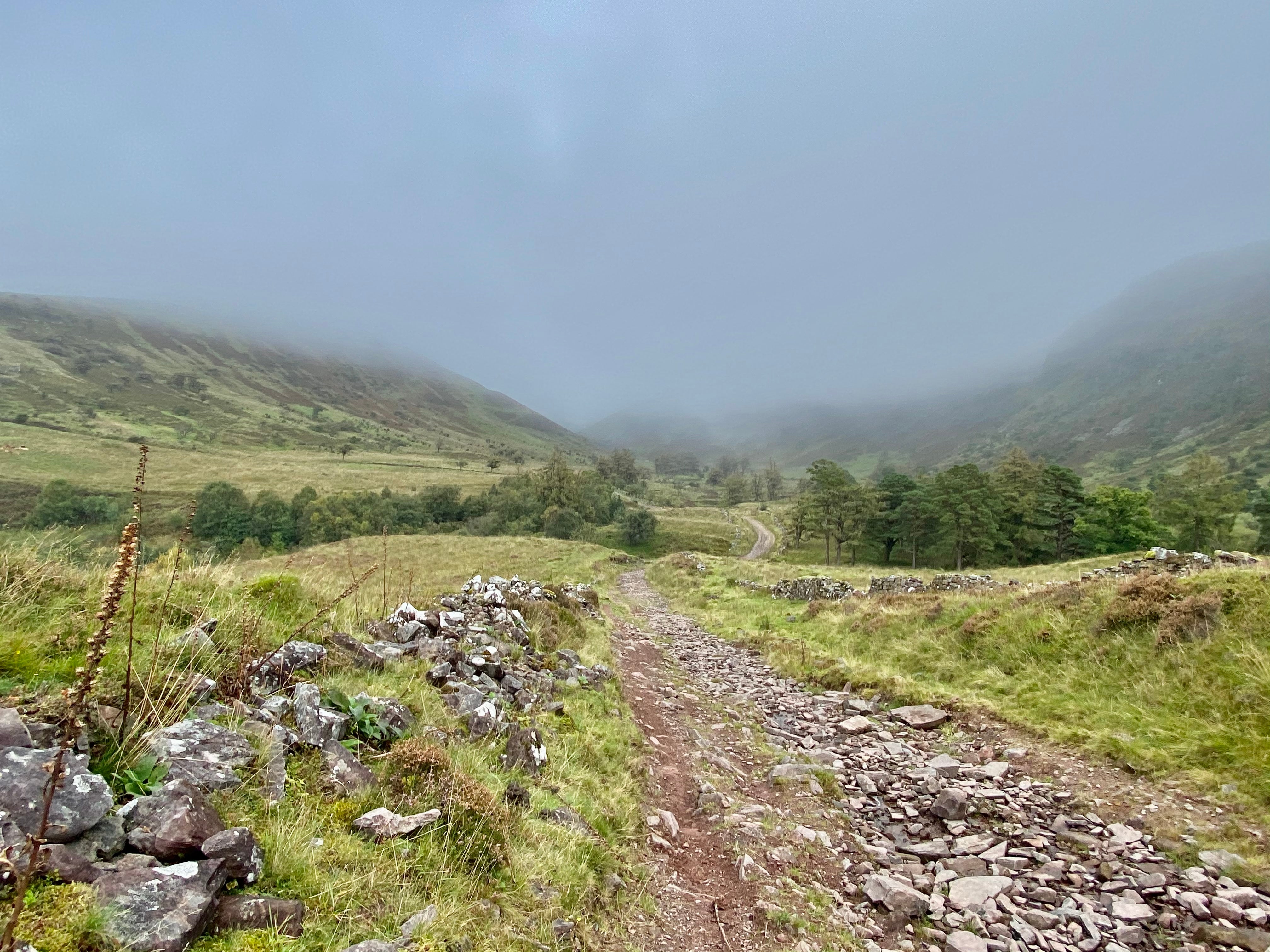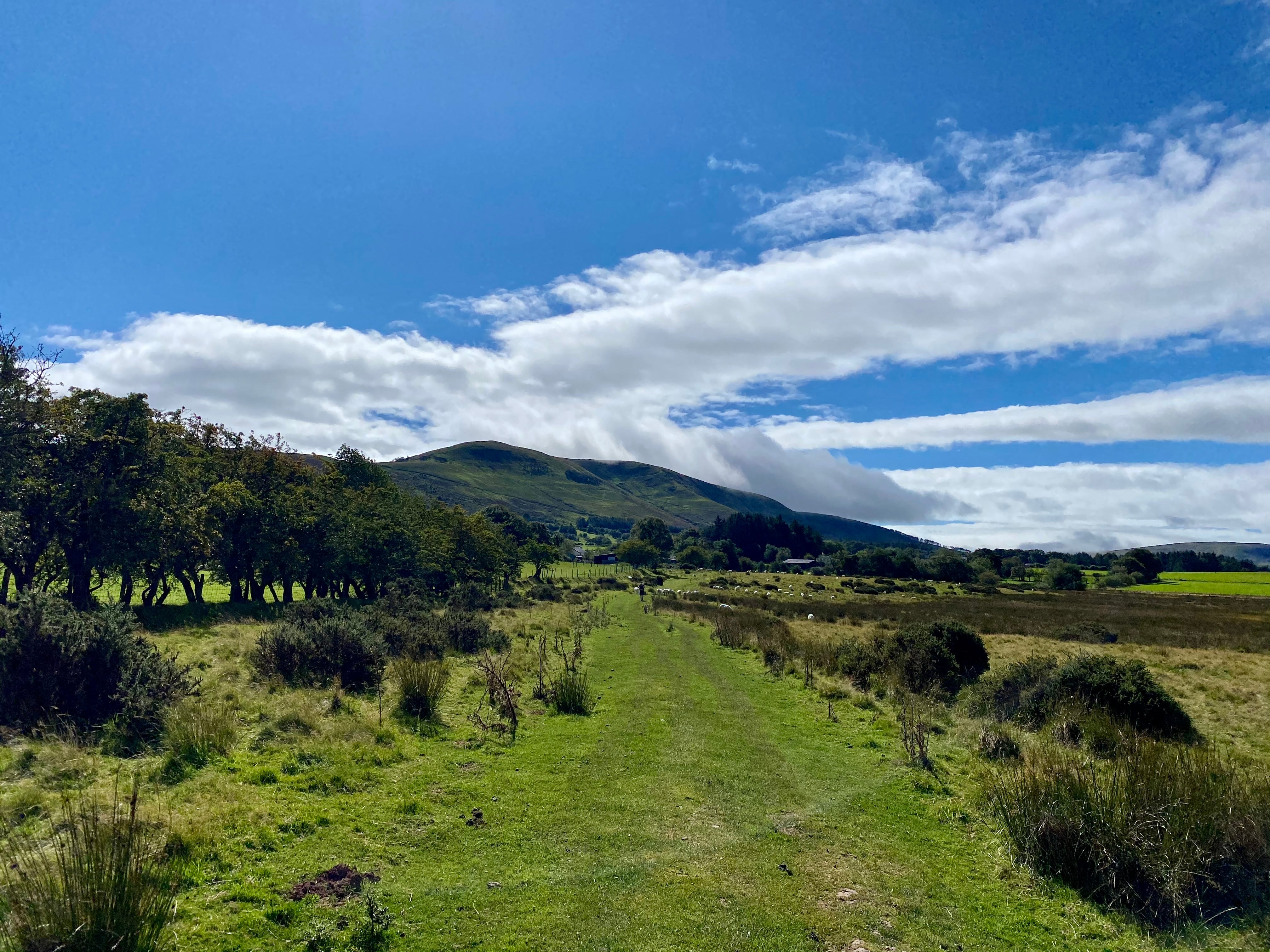The Independent's journalism is supported by our readers. When you purchase through links on our site, we may earn commission.
Discovering Sarn Helen, Wales’ ancient Roman way
This long and winding road makes for evocative hiking territory, finds Sian Lewis


Roads go on / While we forget, and are / Forgotten like a star / That shoots and is gone.
So wrote poet Edward Thomas of Sarn Helen, one of Wales’ ancient ways. The Romans invaded Wales in 43 AD, and built a network of roads connecting their camps and forts across the country. Some are now busy dual carriageways, such as the A5 – all remnants of its history squished beneath layers of tarmac. But others, such as Sarn Helen, still lie peaceful and half-hidden in the Welsh landscape, their 2,000-year-old stones accessible on foot or by mountain bike.
Sarn Helen once stretched north to south across the length of Wales, and two original sections survive: 160 miles from Carmarthen to Aberconwy and 33 miles from Neath to Brecon. “Helen’s Causeway”, named for Saint Elen, still seems surprisingly little known, despite the fact that today you can choose to follow it the length of Wales, or just dip in for just a few hours’ stroll. One look at the map convinced me that the 33-mile intact, car-free stretch from Neath to Brecon, which runs straight over the wild Brecon Beacons National Park, would make the perfect two-day hiking route.
I set out to follow Thomas’s “enduring road” on what seemed like a balmy September day. I’ve made a mistake that should earn me instant scorn among hardy mountain hikers – reader, I did not check the weather properly. When I left home the forecast was clear and dry. But I’ve reckoned without the fact that the Beacons are a law – and a weather system – completely unto themselves, and when I arrive at my starting point, on the outskirts of the town of Neath, the sky over the National Park is iron grey. Undeterred, I set off along Sarn Helen armed with a waterproof map, a lightweight tent and a packet of Hobnobs.
I’m following a road composed of an intricate puzzle of stone slabs, some laid by the original Roman way makers. A soft rain is falling but it doesn’t dampen the beauty of the cobbled track as it cuts through a shady pine forest. The trees are wreathed in thick moss, and I spot fly agaric, the red and white spotted mushroom beloved by storybook illustrators, pushing up from the green forest floor.

One joy of this section of Sarn Helen is that the wide stone track runs straight and true for mile after mile. Often, it’s the only path around, taking away any need to navigate and allowing solo hikers like me to relax into a steady pace. Solo is right – I’m completely alone for the entire day’s march. I know that some amazing mountain vistas are out there somewhere, but the fog has swallowed them up. At first, it’s fun to wander in the mist and try to guess which cobbles underfoot are originals. Seven miles later it’s a tad less enjoyable, the stones are just stones, and my waterproof coat is heavy with a wet mist. But there is still a real pleasure in walking alone in the wild, and it’s strange to think of the wall-to-wall crowds that often gather on the summit of Pen y Fan, and at other Welsh beauty spots, as I hike my own private trail.
Fifteen miles done and I’m on the cusp of the mountains below the peaks of Fan Llia and Fan Nedd, where I pitch my tent. I wake the next morning to find a bedraggled sheep sheltering next to my camp – and a fat slug making a nice home inside one of my hiking boots.
The trees are wreathed in thick moss, and I spot fly agaric, the red and white spotted mushroom beloved by storybook illustrators, pushing up from the green forest floor
Perhaps because I am alone, with just mountains and slick cobbles for company, it’s easy to conjure up the platoons of Roman soldiers who tramped this way before me. This is a path that has changed little over the centuries. Sarn Helen was a military road, and the route linked Roman camps such as nearby Y Gaer. But the most concrete reminder of the soldiers is here, where I start the second half of my walk. A towering 10ft stone pillar known as Maen Madoc stands lonely by the side of the path. It has taken a beating from two thousand years of Welsh weather, but you can still make out a Latin inscription carved into the stone to remember a fallen Roman soldier. “Dervac[ius] filius Iust[i] [h]ic iacit” – Here lies Dervacus, son of Iustus.
My second day’s trek is a long one – I slog 18 miles across the Beacons to reach the town of Brecon. Part of this section is called the “road to hell” by fellow hikers but the steep climbs and descents are made far less painful by the sun that breaks through the clouds. I finally get my epic mountain vistas – they’re worth the wait – and my clothes dry in the warm sunshine as I follow Sarn Helen away from the peaks. It’s still so quiet on the trail that I feel something akin to culture shock when I stop at the busy Mountain Centre for a cup of coffee.

The final few miles into Brecon are through gentle farmland, and when I reach the (literal) end of the road I feel like I’m re-entering the 21st century, leaving fog-wreathed Roman Wales behind me. I’ve run out of Hobnobs, so it’s probably for the best. But I’ll be back. Like all of us, I’ve had to stick to paths closer to home this winter, but as soon as invading platoons of walkers are permitted across the border again, I’ll return to Wales to hike the rest of this ancient and enduring road.
More information
Find Sian’s mapped two-day hiking route on Komoot.
James Nevitt’s Sarn Helen Trail blog includes a five-day mountain biking itinerary and GPX coast-to-coast route across Wales from Llandudno to Swansea.
Join our commenting forum
Join thought-provoking conversations, follow other Independent readers and see their replies
Comments
Bookmark popover
Removed from bookmarks